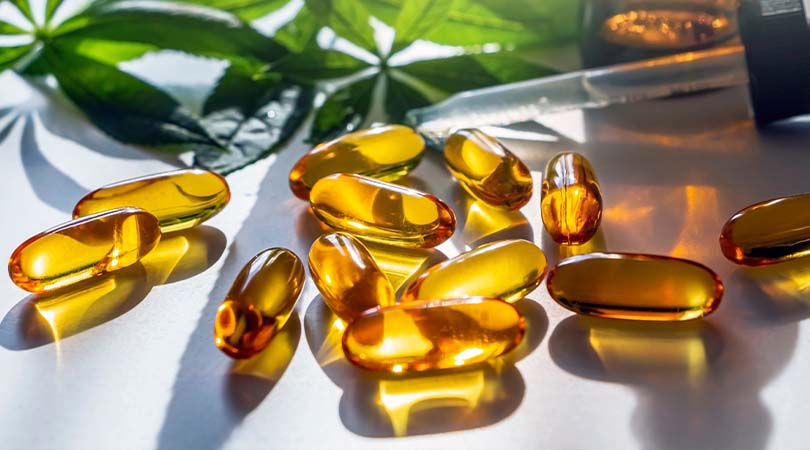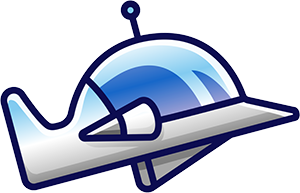While we are grateful at the rate and direction that weed is going, there are times where you’ll find that products do not meet quality standards and, therefore, aren’t the best for consumption. Not only can this be dangerous, but for newbies, it completely ruins their first weed experience. So, what can cannabis consumers look forward to? THC pills. Perfect for non-smokers and those looking for a discreet dose, pills are a great way to deliver THC.
What’s even better? Though not the same as smoking a joint or eating an edible, it can help medicinal patients who benefit from weed with accurate dosing. But what is a THC pill? And what does a THC pill look like? Essentially, it’s a capsule filled with a potent THC concentrate, either store-bought or homemade. It appears like the average supplement most people take daily.
What’s THC?
Before we get into the process of making your own weed capsules, it’s essential to break down the juxtapositions between hemp and marijuana in hopes of clearing the air for those new to THC so they can better decipher two commonly known plant varieties.
Marijuana and hemp are both beneficial in their own rights and should be respected as such. However, with differences surrounding their legality, appearances, effects, and even how you consume them, knowing how they differ is crucial to understanding the cannabis world. Perhaps the most significant difference between the two plants is their CBD and THC concentrations — the two most well-studied cannabinoids in cannabinoids.
Unlike hemp plants, marijuana contains much more than 0.3% THC and produces a “high” feeling in the body when consumed. Although typically bred for its psychoactivity, marijuana can also contain high percentages of CBD; it simply depends on the strain. Strains are essentially different variations of the marijuana plant, containing individualized terpenes and cannabinoid percentages to make each one different from the next.
The Legality Surrounding Weed
As far as effects go, many don’t realize that tetrahydrocannabinol (THC) found in the plant offers many health benefits outside of its recreational use. So, about the benefits outside of consuming cannabis to get lifted to the skies — are there any uses for good ol’ Mary Jane’s THC besides the enjoyment of its psychoactive effects? The short answer is yes, there absolutely are. Moreover, there is evidence, both anecdotal and medical, that shows THC does have medicinal value.
Cannabinoids found in the marijuana plant activate our endocannabinoid system (ECS) — a biological network chalked with cannabinoid (CB) receptors found throughout our body to help maintain the regular functioning of essential body functions — think memory, mood, pain, appetite. The (ECS) has a considerable effect on the body’s nervous system and immune system; therefore, marijuana tends to positively affect managing pain, inflammation, muscle spasms, and more.
While we do not suggest marijuana cannot be a treatment for any of these disorders because its cannabinoids bind directly to receptors in the brain, many have found that relief from symptoms and side effects are unlike any other conventional medication.
Marijuana can contain much higher levels of THC than hemp, with percentages usually between 15 and 25, depending on the strain. These high levels of THC, combined with CBD and other cannabinoids, can cause quite the psychoactive effects, which, for most, gives them the best experience possible. When given a chance to work with its other cannabinoid counterparts, THC can help create overwhelmingly positive effects for both the mind and body.
Any Benefits?
As far as effects go, many don’t realize that tetrahydrocannabinol (THC) found in the plant offers many health benefits outside of its recreational use. So, about the benefits outside of consuming for the purpose of getting lifted to the skies — are there any uses for good ol’ Mary Jane’s THC besides the enjoyment of its psychoactive effects? The short answer is yes, there absolutely are. There is evidence, both anecdotal and medical, that shows THC does have medicinal value.
Cannabinoids found in the marijuana plant activate our endocannabinoid system (ECS) — a biological network chalked with cannabinoid (CB) receptors found throughout our body to help maintain the regular functioning of essential body functions — think memory, mood, pain, appetite. The (ECS) has a considerable effect on the body’s nervous system and immune system; therefore, marijuana tends to positively affect managing pain, inflammation, muscle spasms, and more.
While we do not suggest marijuana cannot be a treatment for any of these disorders because its cannabinoids bind directly to receptors in the brain, many have found that relief from symptoms and side effects are unlike any other conventional medication.
Marijuana can contain much higher levels of THC than hemp, with percentages usually between 15 and 25, depending on the strain. These high levels of THC, combined with CBD and other cannabinoids, can cause quite the psychoactive effects, which, for most, is what gives them the best experience possible. When given a chance to work with its other cannabinoid counterparts, THC can help create overwhelmingly positive effects for both the mind and body.
How to Make Them
No doubt, THC weed capsules in Canada can be pretty expensive, but they can be very cost-effective when made at home using two different methods. However, if you plan to make and use these capsules regularly or would like to make a few batches for later use, you’ll need:
Ingredients and tools
- Cannabis
- Liquid Coconut oil
- Empty capsules
- Capsule holder
- Syringe
Method #1 – Concentrates
- Decarb concentrates.
- Warm coconut oil on medium heat to 150° F in a double boiler.
- Stir in your tincture or concentrate gently and heat on low for between 15-20 minutes.
- Remove from the heat and allow your liquid to cool to room temperature.
- Separate your empty capsules, placing the bottoms into the capsule holder and the tops on the side in a safe place where they don’t fall.
- Stir your oil. Then use your syringe to suck some of the oil and fill each capsule bottom.
- Put the tops on and push them together gently, ensuring they are secured.
- Enjoy!
Ingredients and tools
- Cannabis
- Saucepan
- Double boiler
- Virgin Coconut oil
- 3-4 cups water
- Strainer or cheesecloth
- Syringe
- Empty capsules
- Capsule holder
Method #2 – Dried Flower
- Using a double boiler or saucepan, heat your virgin coconut oil, 3-4 cups of water and desired amount of decarb cannabis on low heat for 4 hours. Be sure to monitor and maintain 3 cups of water for the duration of time.
- Strain your mixture using your strainer or cheesecloth and remove any remaining oil by chasing the mixture with e with a few cups of boiling water. Once that’s done, let it cool down.
- Remove the hardened oil and place it into your saucepan. Heat it until fully melted.
- Take apart your capsule tops and bottoms, and place the bottoms into the capsule holder.
- Use your syringe to suck up the oil to fill the capsule bottoms. Put the tops on the bottoms tightly and carefully while on the capsule holder.
- Enjoy!
Conclusion
There are many ways to enjoy THC, and as we’ve learned today, it’s far more than just vaping or eating an edible. You can enjoy your marijuana in the size of a tiny capsule, perfect for winding down before bed or after a long day — the choice is entirely up to you.
If you’re new to the world of weed, you must take the timeH to research what form of weed works best for you and be sure to monitor your intake and how it affects your body. Then, you can visit a site such as Weed List and find helpful information on cannabis capsules and where to get some.
Interesting Reads
How to Roll a Cone Joint, How to Smoke Weed, 9 Etiquette Tips for Smoking Marijuana with Friends





